The Casual Impact of Immigration on Trade: US Econometric Study
VerifiedAdded on 2021/02/19
|6
|1143
|17
Report
AI Summary
This report investigates the casual impact of immigration on trade in the USA, employing econometric methods to analyze the relationship. The research begins with an overview of immigration and its various drivers, followed by a detailed exploration of the research aim, objectives, and questions guiding the study. A comprehensive literature review synthesizes existing research on the topic, setting the stage for the methodology section, which outlines the research approach, including qualitative and quantitative methods, and primary and secondary data collection techniques. The report then presents the data analysis and interpretation, leading to the conclusion and recommendations. The structure includes chapters on introduction, literature review, methodology, data analysis, and conclusion, supported by references to relevant sources. The study aims to provide empirical evidence on how immigration influences trade dynamics within the US economy.
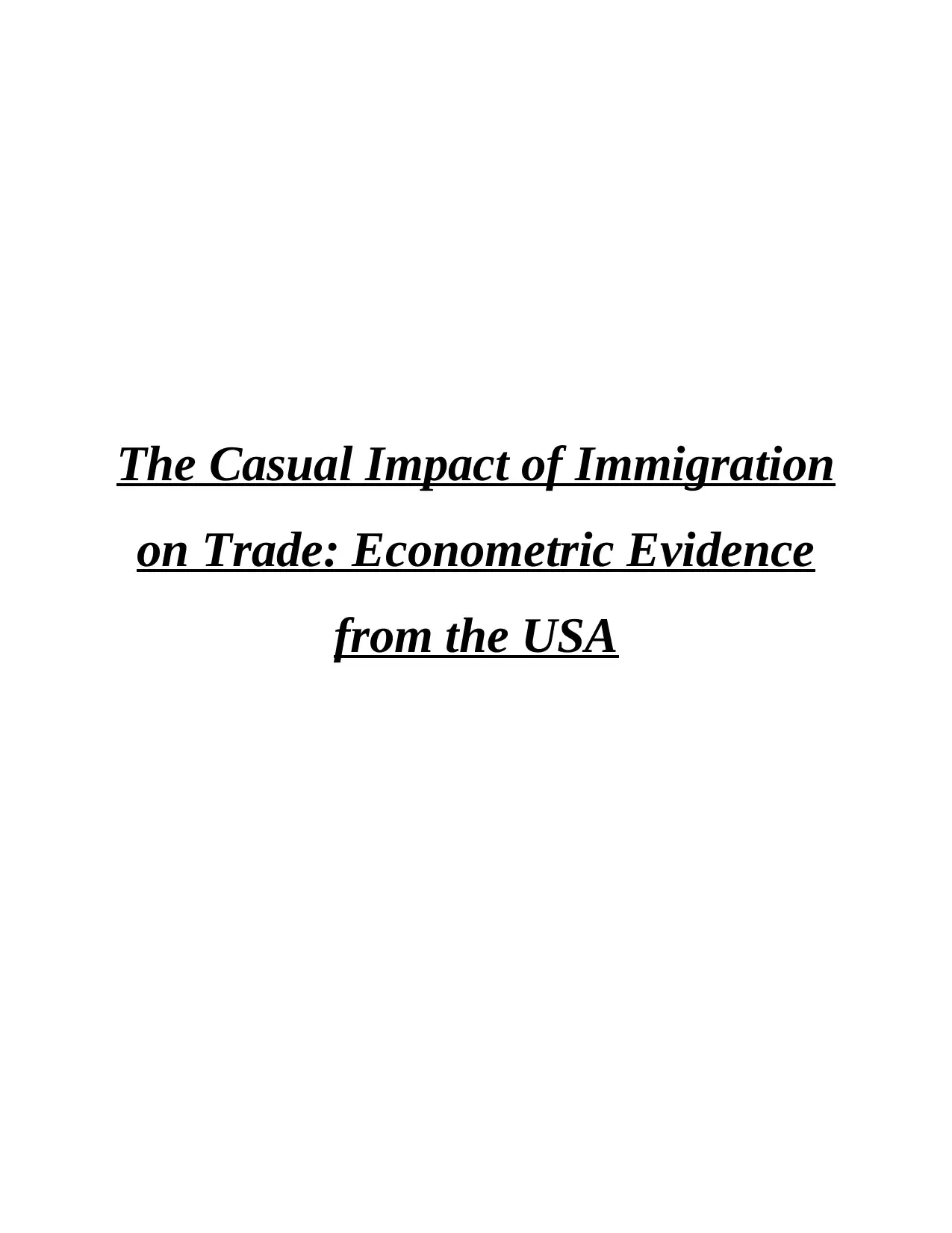
The Casual Impact of Immigration
on Trade: Econometric Evidence
from the USA
on Trade: Econometric Evidence
from the USA
Paraphrase This Document
Need a fresh take? Get an instant paraphrase of this document with our AI Paraphraser
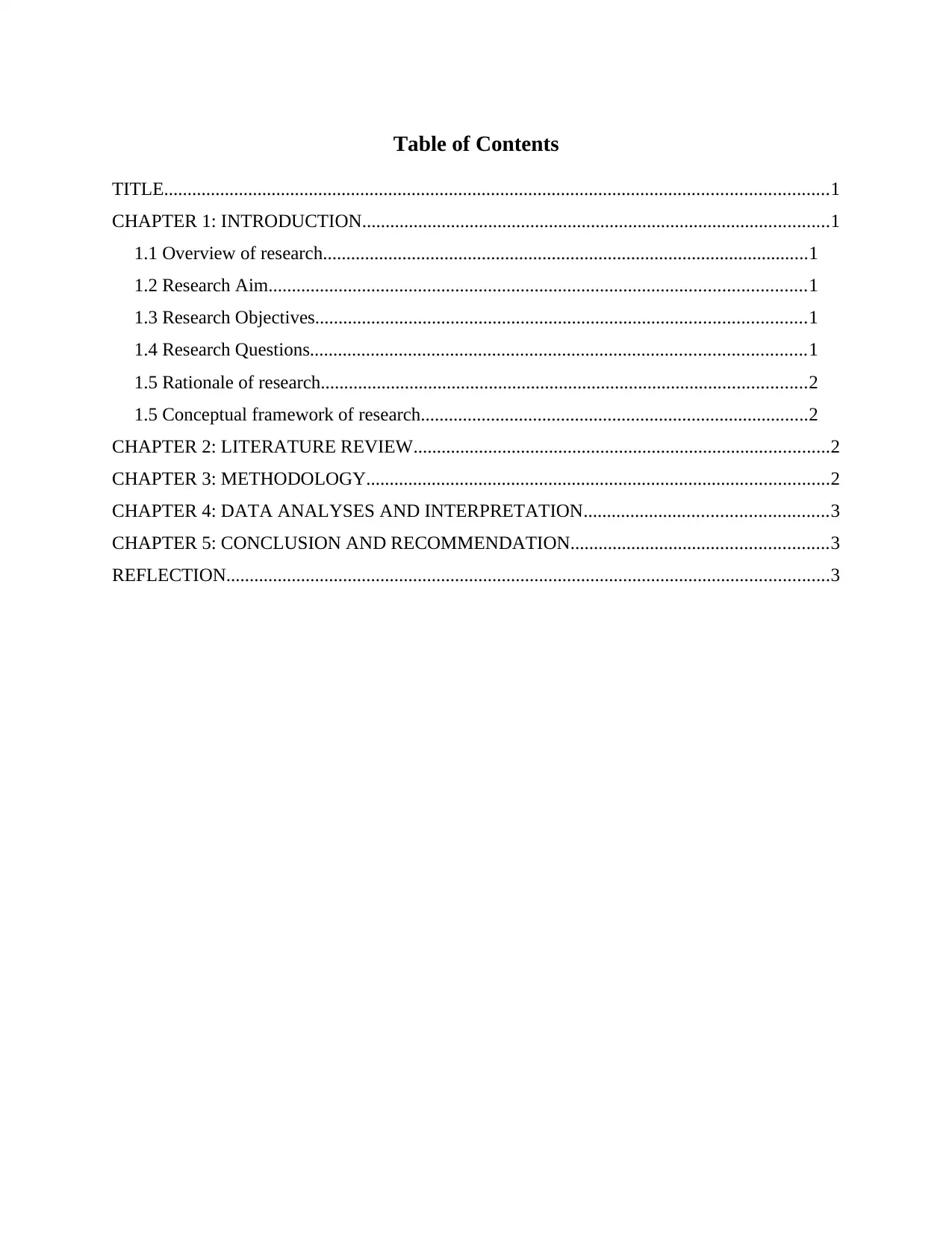
Table of Contents
TITLE..............................................................................................................................................1
CHAPTER 1: INTRODUCTION....................................................................................................1
1.1 Overview of research........................................................................................................1
1.2 Research Aim...................................................................................................................1
1.3 Research Objectives.........................................................................................................1
1.4 Research Questions..........................................................................................................1
1.5 Rationale of research........................................................................................................2
1.5 Conceptual framework of research...................................................................................2
CHAPTER 2: LITERATURE REVIEW.........................................................................................2
CHAPTER 3: METHODOLOGY...................................................................................................2
CHAPTER 4: DATA ANALYSES AND INTERPRETATION....................................................3
CHAPTER 5: CONCLUSION AND RECOMMENDATION.......................................................3
REFLECTION.................................................................................................................................3
TITLE..............................................................................................................................................1
CHAPTER 1: INTRODUCTION....................................................................................................1
1.1 Overview of research........................................................................................................1
1.2 Research Aim...................................................................................................................1
1.3 Research Objectives.........................................................................................................1
1.4 Research Questions..........................................................................................................1
1.5 Rationale of research........................................................................................................2
1.5 Conceptual framework of research...................................................................................2
CHAPTER 2: LITERATURE REVIEW.........................................................................................2
CHAPTER 3: METHODOLOGY...................................................................................................2
CHAPTER 4: DATA ANALYSES AND INTERPRETATION....................................................3
CHAPTER 5: CONCLUSION AND RECOMMENDATION.......................................................3
REFLECTION.................................................................................................................................3
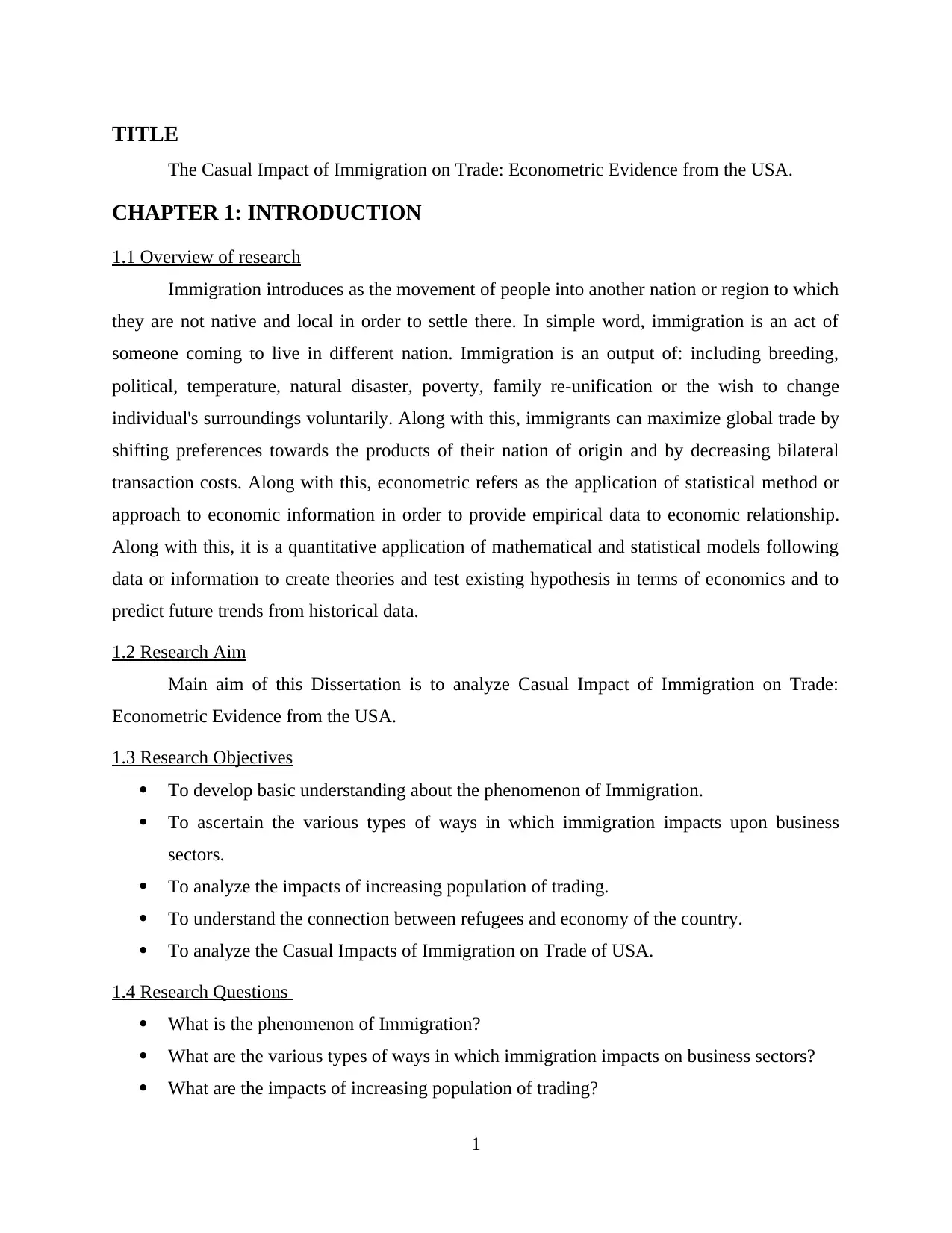
TITLE
The Casual Impact of Immigration on Trade: Econometric Evidence from the USA.
CHAPTER 1: INTRODUCTION
1.1 Overview of research
Immigration introduces as the movement of people into another nation or region to which
they are not native and local in order to settle there. In simple word, immigration is an act of
someone coming to live in different nation. Immigration is an output of: including breeding,
political, temperature, natural disaster, poverty, family re-unification or the wish to change
individual's surroundings voluntarily. Along with this, immigrants can maximize global trade by
shifting preferences towards the products of their nation of origin and by decreasing bilateral
transaction costs. Along with this, econometric refers as the application of statistical method or
approach to economic information in order to provide empirical data to economic relationship.
Along with this, it is a quantitative application of mathematical and statistical models following
data or information to create theories and test existing hypothesis in terms of economics and to
predict future trends from historical data.
1.2 Research Aim
Main aim of this Dissertation is to analyze Casual Impact of Immigration on Trade:
Econometric Evidence from the USA.
1.3 Research Objectives
To develop basic understanding about the phenomenon of Immigration.
To ascertain the various types of ways in which immigration impacts upon business
sectors.
To analyze the impacts of increasing population of trading.
To understand the connection between refugees and economy of the country.
To analyze the Casual Impacts of Immigration on Trade of USA.
1.4 Research Questions
What is the phenomenon of Immigration?
What are the various types of ways in which immigration impacts on business sectors?
What are the impacts of increasing population of trading?
1
The Casual Impact of Immigration on Trade: Econometric Evidence from the USA.
CHAPTER 1: INTRODUCTION
1.1 Overview of research
Immigration introduces as the movement of people into another nation or region to which
they are not native and local in order to settle there. In simple word, immigration is an act of
someone coming to live in different nation. Immigration is an output of: including breeding,
political, temperature, natural disaster, poverty, family re-unification or the wish to change
individual's surroundings voluntarily. Along with this, immigrants can maximize global trade by
shifting preferences towards the products of their nation of origin and by decreasing bilateral
transaction costs. Along with this, econometric refers as the application of statistical method or
approach to economic information in order to provide empirical data to economic relationship.
Along with this, it is a quantitative application of mathematical and statistical models following
data or information to create theories and test existing hypothesis in terms of economics and to
predict future trends from historical data.
1.2 Research Aim
Main aim of this Dissertation is to analyze Casual Impact of Immigration on Trade:
Econometric Evidence from the USA.
1.3 Research Objectives
To develop basic understanding about the phenomenon of Immigration.
To ascertain the various types of ways in which immigration impacts upon business
sectors.
To analyze the impacts of increasing population of trading.
To understand the connection between refugees and economy of the country.
To analyze the Casual Impacts of Immigration on Trade of USA.
1.4 Research Questions
What is the phenomenon of Immigration?
What are the various types of ways in which immigration impacts on business sectors?
What are the impacts of increasing population of trading?
1
⊘ This is a preview!⊘
Do you want full access?
Subscribe today to unlock all pages.

Trusted by 1+ million students worldwide
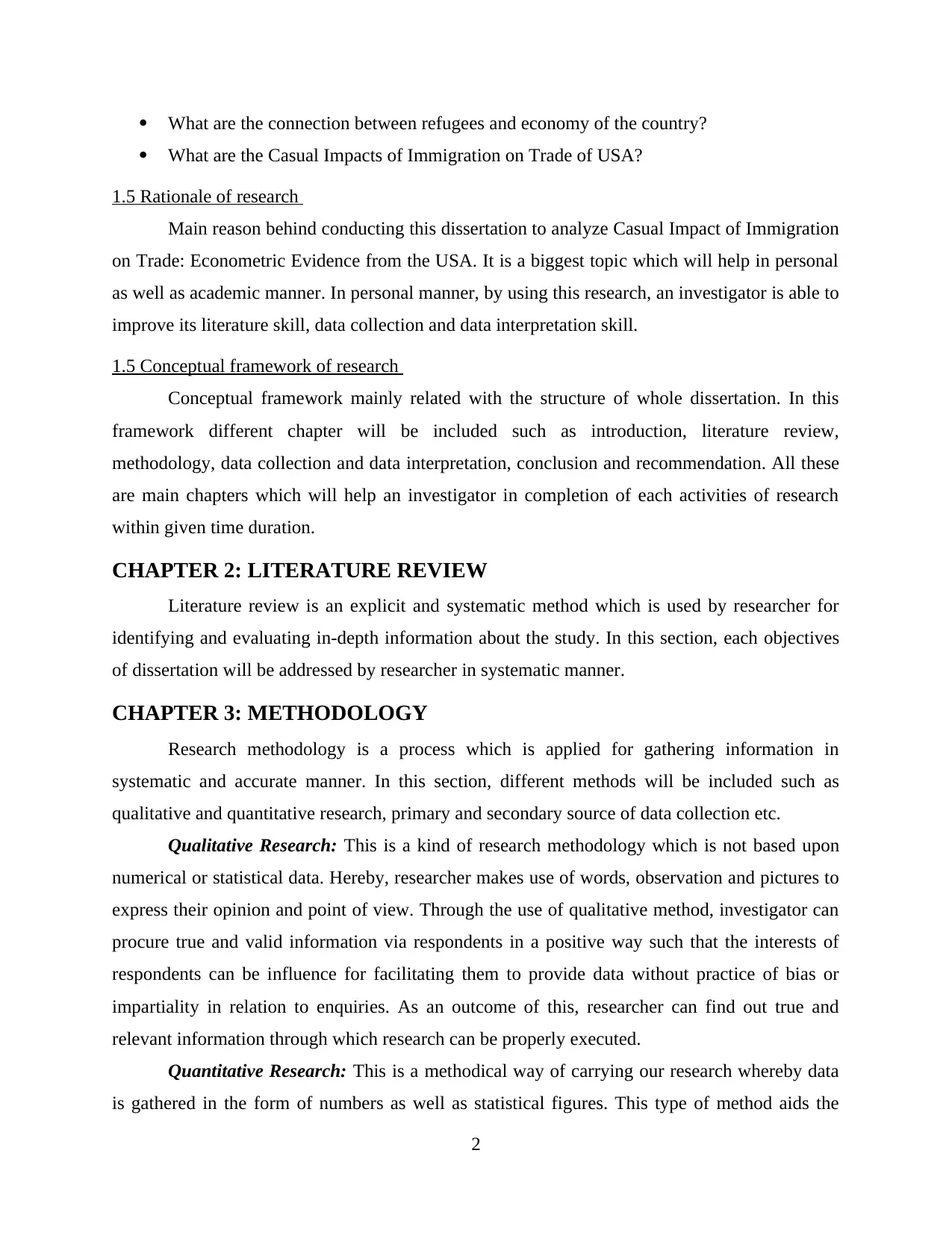
What are the connection between refugees and economy of the country?
What are the Casual Impacts of Immigration on Trade of USA?
1.5 Rationale of research
Main reason behind conducting this dissertation to analyze Casual Impact of Immigration
on Trade: Econometric Evidence from the USA. It is a biggest topic which will help in personal
as well as academic manner. In personal manner, by using this research, an investigator is able to
improve its literature skill, data collection and data interpretation skill.
1.5 Conceptual framework of research
Conceptual framework mainly related with the structure of whole dissertation. In this
framework different chapter will be included such as introduction, literature review,
methodology, data collection and data interpretation, conclusion and recommendation. All these
are main chapters which will help an investigator in completion of each activities of research
within given time duration.
CHAPTER 2: LITERATURE REVIEW
Literature review is an explicit and systematic method which is used by researcher for
identifying and evaluating in-depth information about the study. In this section, each objectives
of dissertation will be addressed by researcher in systematic manner.
CHAPTER 3: METHODOLOGY
Research methodology is a process which is applied for gathering information in
systematic and accurate manner. In this section, different methods will be included such as
qualitative and quantitative research, primary and secondary source of data collection etc.
Qualitative Research: This is a kind of research methodology which is not based upon
numerical or statistical data. Hereby, researcher makes use of words, observation and pictures to
express their opinion and point of view. Through the use of qualitative method, investigator can
procure true and valid information via respondents in a positive way such that the interests of
respondents can be influence for facilitating them to provide data without practice of bias or
impartiality in relation to enquiries. As an outcome of this, researcher can find out true and
relevant information through which research can be properly executed.
Quantitative Research: This is a methodical way of carrying our research whereby data
is gathered in the form of numbers as well as statistical figures. This type of method aids the
2
What are the Casual Impacts of Immigration on Trade of USA?
1.5 Rationale of research
Main reason behind conducting this dissertation to analyze Casual Impact of Immigration
on Trade: Econometric Evidence from the USA. It is a biggest topic which will help in personal
as well as academic manner. In personal manner, by using this research, an investigator is able to
improve its literature skill, data collection and data interpretation skill.
1.5 Conceptual framework of research
Conceptual framework mainly related with the structure of whole dissertation. In this
framework different chapter will be included such as introduction, literature review,
methodology, data collection and data interpretation, conclusion and recommendation. All these
are main chapters which will help an investigator in completion of each activities of research
within given time duration.
CHAPTER 2: LITERATURE REVIEW
Literature review is an explicit and systematic method which is used by researcher for
identifying and evaluating in-depth information about the study. In this section, each objectives
of dissertation will be addressed by researcher in systematic manner.
CHAPTER 3: METHODOLOGY
Research methodology is a process which is applied for gathering information in
systematic and accurate manner. In this section, different methods will be included such as
qualitative and quantitative research, primary and secondary source of data collection etc.
Qualitative Research: This is a kind of research methodology which is not based upon
numerical or statistical data. Hereby, researcher makes use of words, observation and pictures to
express their opinion and point of view. Through the use of qualitative method, investigator can
procure true and valid information via respondents in a positive way such that the interests of
respondents can be influence for facilitating them to provide data without practice of bias or
impartiality in relation to enquiries. As an outcome of this, researcher can find out true and
relevant information through which research can be properly executed.
Quantitative Research: This is a methodical way of carrying our research whereby data
is gathered in the form of numbers as well as statistical figures. This type of method aids the
2
Paraphrase This Document
Need a fresh take? Get an instant paraphrase of this document with our AI Paraphraser
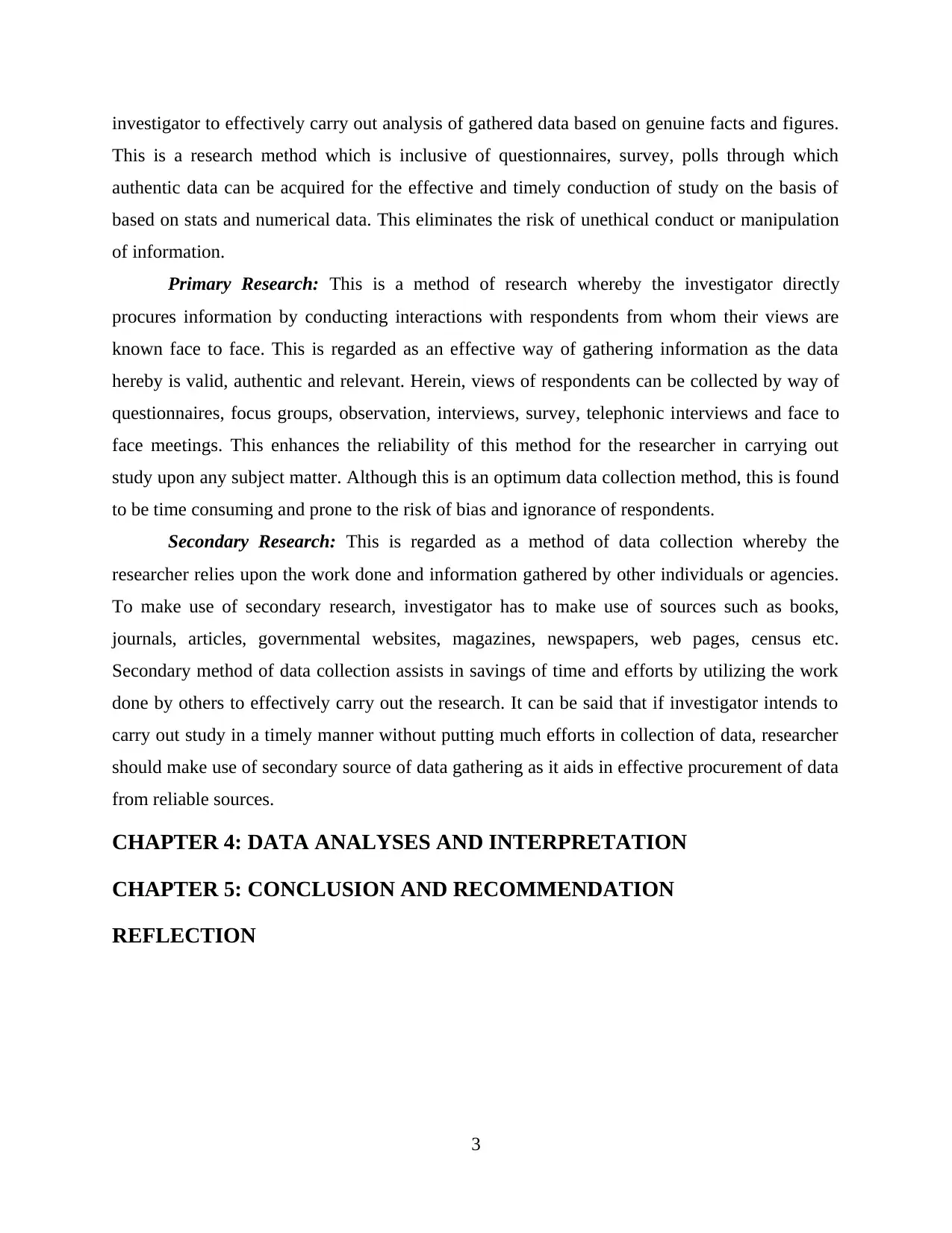
investigator to effectively carry out analysis of gathered data based on genuine facts and figures.
This is a research method which is inclusive of questionnaires, survey, polls through which
authentic data can be acquired for the effective and timely conduction of study on the basis of
based on stats and numerical data. This eliminates the risk of unethical conduct or manipulation
of information.
Primary Research: This is a method of research whereby the investigator directly
procures information by conducting interactions with respondents from whom their views are
known face to face. This is regarded as an effective way of gathering information as the data
hereby is valid, authentic and relevant. Herein, views of respondents can be collected by way of
questionnaires, focus groups, observation, interviews, survey, telephonic interviews and face to
face meetings. This enhances the reliability of this method for the researcher in carrying out
study upon any subject matter. Although this is an optimum data collection method, this is found
to be time consuming and prone to the risk of bias and ignorance of respondents.
Secondary Research: This is regarded as a method of data collection whereby the
researcher relies upon the work done and information gathered by other individuals or agencies.
To make use of secondary research, investigator has to make use of sources such as books,
journals, articles, governmental websites, magazines, newspapers, web pages, census etc.
Secondary method of data collection assists in savings of time and efforts by utilizing the work
done by others to effectively carry out the research. It can be said that if investigator intends to
carry out study in a timely manner without putting much efforts in collection of data, researcher
should make use of secondary source of data gathering as it aids in effective procurement of data
from reliable sources.
CHAPTER 4: DATA ANALYSES AND INTERPRETATION
CHAPTER 5: CONCLUSION AND RECOMMENDATION
REFLECTION
3
This is a research method which is inclusive of questionnaires, survey, polls through which
authentic data can be acquired for the effective and timely conduction of study on the basis of
based on stats and numerical data. This eliminates the risk of unethical conduct or manipulation
of information.
Primary Research: This is a method of research whereby the investigator directly
procures information by conducting interactions with respondents from whom their views are
known face to face. This is regarded as an effective way of gathering information as the data
hereby is valid, authentic and relevant. Herein, views of respondents can be collected by way of
questionnaires, focus groups, observation, interviews, survey, telephonic interviews and face to
face meetings. This enhances the reliability of this method for the researcher in carrying out
study upon any subject matter. Although this is an optimum data collection method, this is found
to be time consuming and prone to the risk of bias and ignorance of respondents.
Secondary Research: This is regarded as a method of data collection whereby the
researcher relies upon the work done and information gathered by other individuals or agencies.
To make use of secondary research, investigator has to make use of sources such as books,
journals, articles, governmental websites, magazines, newspapers, web pages, census etc.
Secondary method of data collection assists in savings of time and efforts by utilizing the work
done by others to effectively carry out the research. It can be said that if investigator intends to
carry out study in a timely manner without putting much efforts in collection of data, researcher
should make use of secondary source of data gathering as it aids in effective procurement of data
from reliable sources.
CHAPTER 4: DATA ANALYSES AND INTERPRETATION
CHAPTER 5: CONCLUSION AND RECOMMENDATION
REFLECTION
3
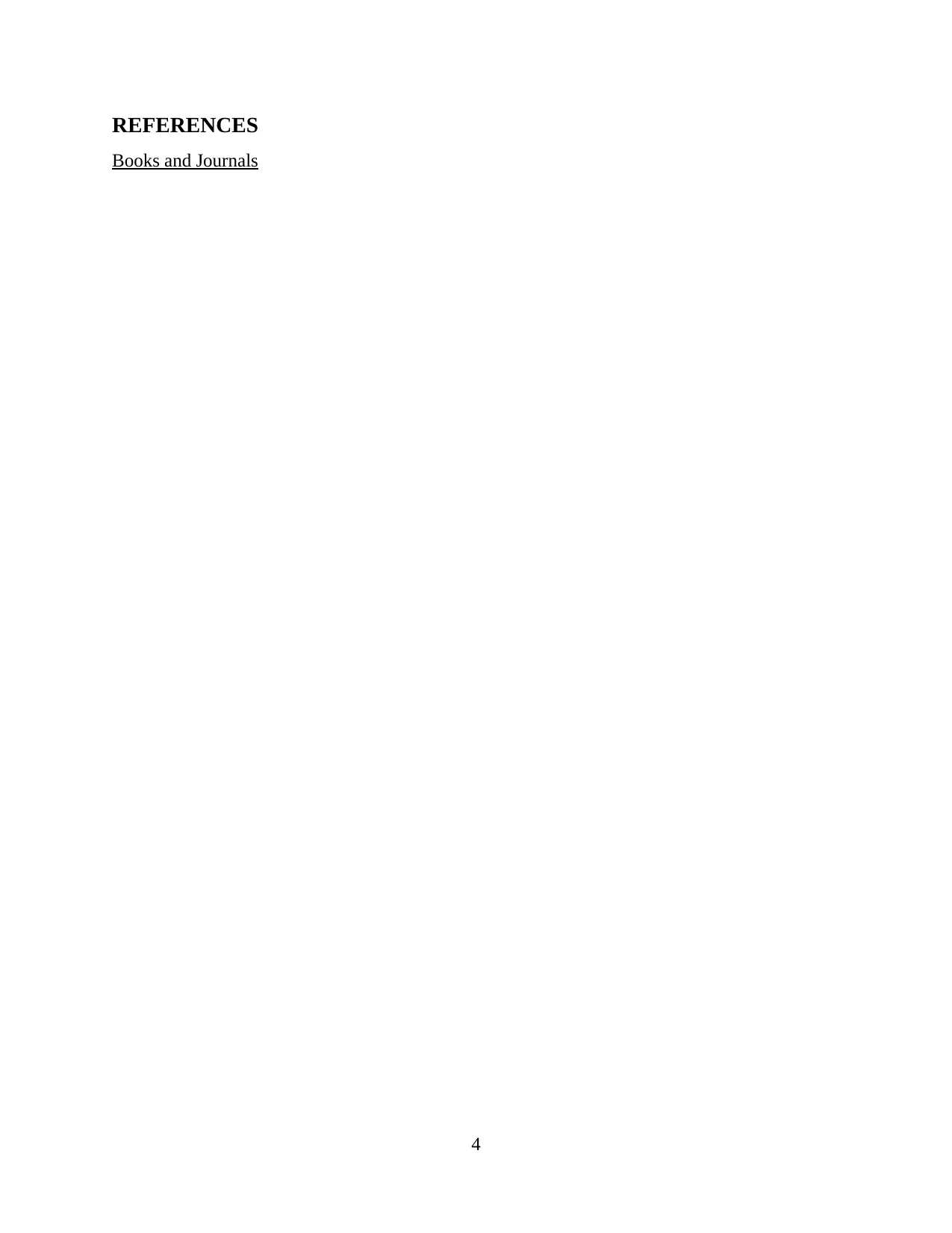
REFERENCES
Books and Journals
4
Books and Journals
4
⊘ This is a preview!⊘
Do you want full access?
Subscribe today to unlock all pages.

Trusted by 1+ million students worldwide
1 out of 6
Related Documents
Your All-in-One AI-Powered Toolkit for Academic Success.
+13062052269
info@desklib.com
Available 24*7 on WhatsApp / Email
![[object Object]](/_next/static/media/star-bottom.7253800d.svg)
Unlock your academic potential
Copyright © 2020–2025 A2Z Services. All Rights Reserved. Developed and managed by ZUCOL.





